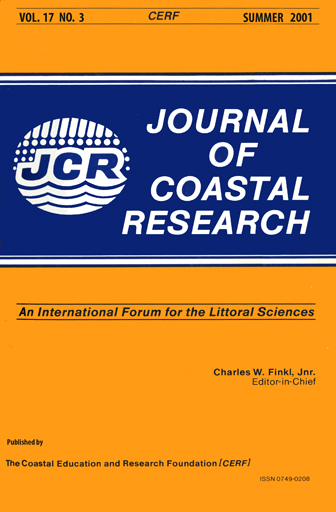Pacific Storms, EI Niño and Tsunamis: Competing Mechanisms for Sand Deposition in a Coastal Marsh, Euchre Creek, Oregon
Keywords:
Remote tsunami, storm-wave runup, magnitude-frequency analyses.Abstract
During the past 600 years, 4 well-sorted sand beds, each with abrupt lower contacts, were deposited in the Euchre Creek marsh by storm waves and a tsunami. Brackish-marine diatoms preserved within the sand indicate a marine origin, but nonunique physical characteristics of the sand beds otherwise prevent the distinction of the depositional mechanism. However, a 150 year average recurrence interval for the sand beds is significantly smaller than the 500 to 540 year inferred recurrence interval for Cascadia subduction zone earthquakes, indicating that not all of the sand beds record local tsunamis. We consider storm-wave runup during extreme ocean levels and remote tsunamis generated elsewhere in the Pacific Rim, in addition to Cascadia tsunamis, as potential sand depositional mechanisms in washover settings of the Oregon coast. Magnitude-frequency analyses of tide gage and weather buoy data, along with historic records of remote tsunamis, indicate that storm-wave runup superimposed on extreme ocean levels attain heights >5 m every 10 years and may exceed 7 m every century, whereas remote tsunamis of similar magnitudes recur over periods of several hundred years. The best candidate for a tsunami deposit associated with the A.D·. 1700 Cascadia earthquake is the thickest sand deposit which consists of multiple, fining-upward beds. The other sand deposits most likely record multiple episodes of storm-wave washover or possibly, but less likely, a remote tsunami. A simple model of relative sea-level response to the seismic cycle predicts that lower runup elevations were necessary for marine inundation of the marsh at times during the past 600 years due to coseismic subsidence.Downloads
Published
2001-07-27
Issue
Section
Articles


